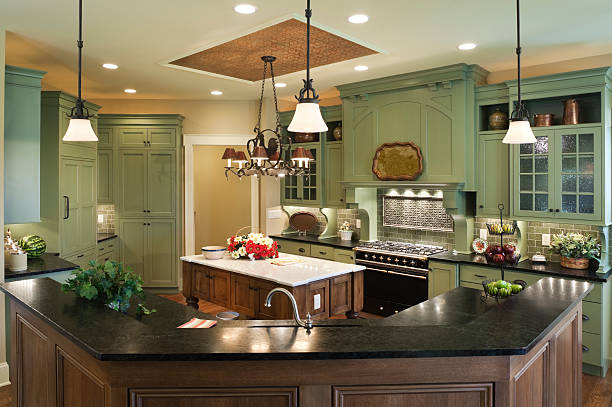When it comes to renovating your kitchen or bathroom, selecting the right cabinetry can significantly impact both aesthetics and functionality. Fortunately for homeowners in Denver, there’s an abundance of local businesses dedicated to providing high-quality custom cabinet solutions. In this comprehensive guide, we will explore various aspects of Denver cabinets – from materials and styles to installation and maintenance tips. By understanding these essential factors, you can make informed decisions that align with your design vision and budget.
Material Options for Denver Cabinets
Solid Wood
- Pros: Provides natural beauty, durability, and versatility; available in numerous species such as oak, cherry, maple, and walnut.
- Cons: Susceptible to moisture damage if not properly sealed; may experience slight color changes over time due to sunlight exposure.
Medium-Density Fiberboard (MDF)
- Pros: Smooth surface ideal for painting; resistant to warping, cracking, and splitting.
- Cons: Heavier than solid wood; does not offer the same level of natural character.
Plywood
- Pros: Stronger and more stable than solid wood; less prone to expansion and contraction; cost-effective alternative.
- Cons: Not suitable for staining due to its layered construction; edges require finishing to prevent water absorption.
Popular Styles for Denver Cabinets
Shaker Style
A timeless choice characterized by clean lines and recessed panel doors, shaker style cabins are perfect for modern and traditional homes alike. Their simplicity allows them to blend seamlessly with various decor themes while offering functional storage space.
Flat Panel/Slab Style
Modern and minimalistic, flat panel or slab-style cabinets feature smooth surfaces without any raised moldings or panels. Ideal for contemporary designs, they create a sleek appearance that emphasizes horizontal lines and encourages visual continuity throughout open floor plans.
Raised Panel Style
Raised panel cabinets showcase intricate detailing on their door fronts, adding depth and dimension to your kitchen or bathroom spaces. Often used in traditional settings, they provide elegance and sophistication through classic craftsmanship.
Choosing the Right Finish for Your Denver Cabinets
Stained finishes allow the natural grain patterns of wooden cabinetry to shine while enhancing their warmth and richness. On the other hand, painted finishes offer greater flexibility regarding color selection and hide imperfections better than stains. Consider consulting with professional designers or manufacturers to ensure proper finish application and longevity.
Installation Tips for Denver Cabinets
- Measure Accurately: Ensure precise measurements of your kitchen or bathroom space before ordering cabinets to avoid misalignment issues during installation.
- Level Surfaces: Check all wall studs, countertops, and floors for levelness prior to installing cabinets to guarantee stability and alignment.
- Space Evenly: Maintain consistent spacing between individual units for uniformity and optimal accessibility.
- Secure Properly: Use appropriate screws, anchors, and brackets to fasten each cabinet securely into place, preventing potential sagging or collapse.
- Seal Gaps: Fill gaps between adjoining walls and cabinet faces using caulk or trim pieces to achieve a polished look.
Maintenance Guidelines for Denver Cabinets
- Regular cleaning using mild soap and warm water helps maintain cabinetry appearance and prevents grime buildup.
- Periodic resealing or refinishing may be necessary depending on material type and usage frequency.
- Immediately address any signs of water damage to minimize long-term effects on structural integrity.
Conclusion
Selecting the perfect Denver cabinets requires careful consideration of several factors, including material options, preferred styles, and finishing choices. With accurate measurement techniques, proper installation methods, and regular upkeep routines, you can enjoy beautiful and durable custom cabinet solutions tailored specifically to your Denver residence.

